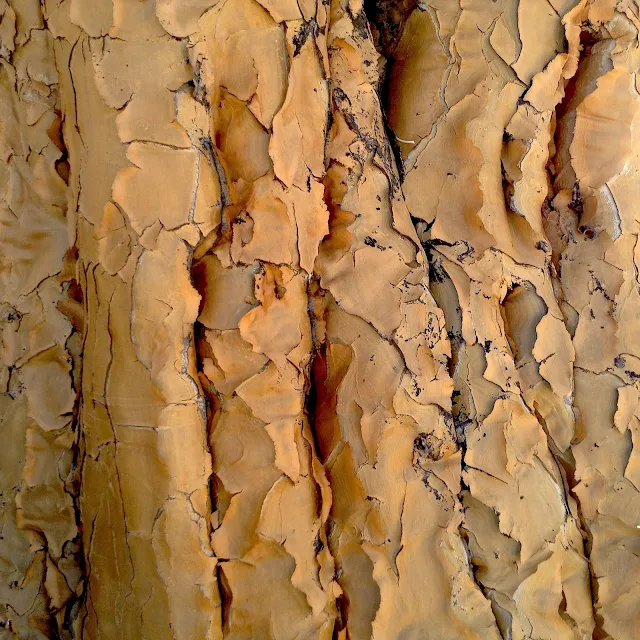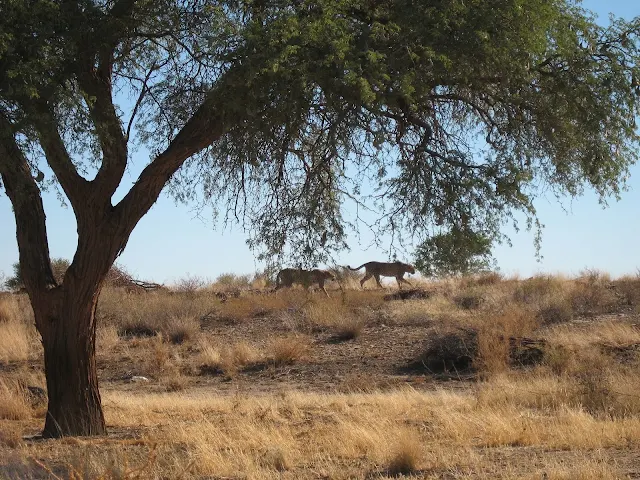 SANDRA MEEK (USA)
SANDRA MEEK (USA)Quiver Tree (Aloe dichotoma)
Not the horizon’s rippling, stick-built from wind-
battered grass; not the dark
cauldron of volcanic stone, earth-
worn to crumbling
black loaves at your roots’
blazing what failed
to surface as flow —
*
You, always
some other, your canary-yellow flower-buds said
to taste of asparagus; your name a hold
for arrows, poison-tipped tongues
long lost to the flanks
of animals long dust. Who now
scoops your marrow? Who dishes it
to the wind, to the amputated limbs
pillowed at your root?
Each dropped branch an aspiration
you abandoned to survive
the terminal rosette of sun climbing
your forked crown as morning
razored to gold scales
puzzling your trunk, candling
each stump’s bargain never
again to enter that particular
angle of air —
*
Why, then, to weatherthat sun, did you marry
its mirror? Why gift
your body’s cool
to that regret,
to what wished to remain
fire?
*
Drenched in dawn’squickening blue, petrified across
the dolerite sill: your shadow
clawing inward until noon entirely
eclipses the dialectics
of your limbs and your ghost limbs,
what you gave up and what you
determined to.
*
Lost, that view to what stone might have ascended to: night a sheer drop
distance starred to incarnate
beauty, what you could nearly
clasp between the clumsy rinds
of your leaves, thick as swaddled hands
fire and healing sear
to flipper, fingers forever sealed
beyond grasping —
*
But how else holdsuch communal weight? Sociable Weavers thatch
half your sky, each grass blade bound
to forget how to live
in a landscape of wind was once to know always
something passing over worth
bending down to.
*
Not the evolutionof armor, that snow-white powder
blinding your limbs; not the shadow-
dusted nest
of evening’s descent, nor the ashen
wings the full moon
unfurls from your limbs. Not
the desert you rooted. Nowhere
any refuge from heat’s rising
more quickly than you could
possibly pole south toward that
retracting winter —
*
How can the rootedmigrate, except by seed, generation
by generation? Night
more prescience than reprieve: those brilliants
hung above you born
of fire, not ice. Nothing that might yet
dissolve into rain. That sky,
like a graveyard — cluttered by the dead
or the undead, anything
but the living — forecasting a world where beauty belongs
solely to stone, what even
the angels will be made of.
*
Twilight. You the veryarchitecture of night. The rising sun inked
to each stroke of your crown. As if you weren’t
its slave. As if by shedding its stars
sky could become
light itself, not a future with no room
for anything not fire. Not for your shallow
hold to the still-
blackened stone sill. Not for the shrinking
skeleton of your lingering, not the white lie
of your trunk against the sky’s bleaching
blue stare. Not you
at all, Quiver-tree, Kokerboom — vanishing point
of memory and mirage
tendered to the wake
of that clocked fire, what always
watched over you.
-----































